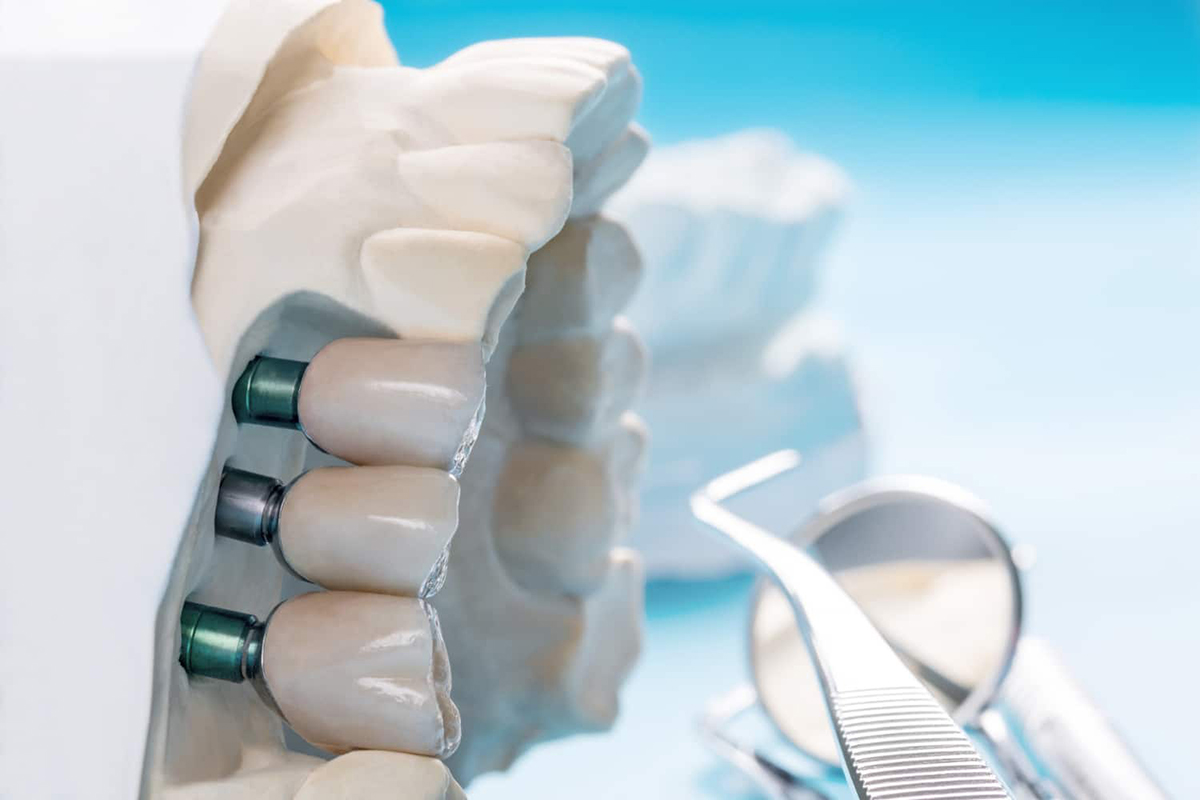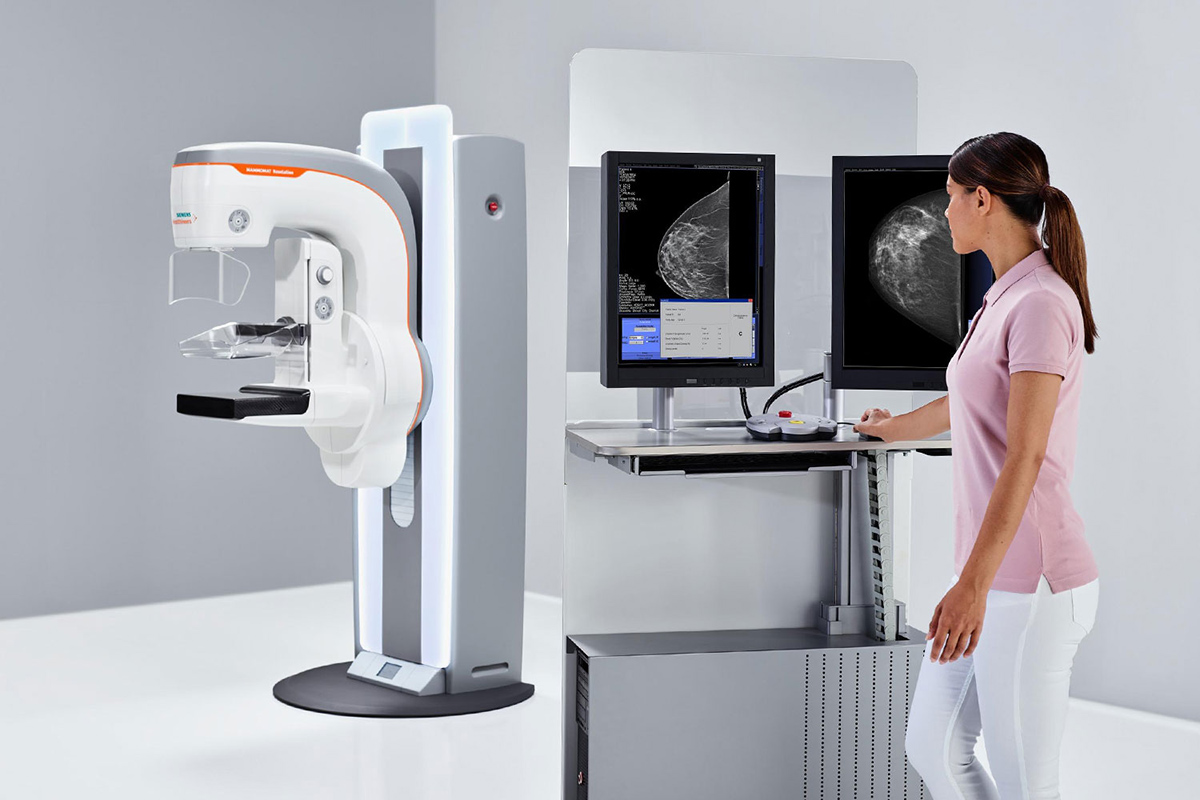Home>Finance>Why Are Diagnostic Mammograms Not Covered By Insurance


Finance
Why Are Diagnostic Mammograms Not Covered By Insurance
Published: November 18, 2023
Find out why diagnostic mammograms are not covered by insurance and explore the financial implications of this exclusion. Discover the impact on women's healthcare and financial burden.
(Many of the links in this article redirect to a specific reviewed product. Your purchase of these products through affiliate links helps to generate commission for LiveWell, at no extra cost. Learn more)
Table of Contents
- Introduction
- Understanding Diagnostic Mammograms
- Insurance Coverage for Preventive Mammograms
- Differences Between Preventive and Diagnostic Mammograms
- Reasons Why Diagnostic Mammograms are not Covered by Insurance
- Cost of Diagnostic Mammograms
- Potential Solutions to Improve Insurance Coverage for Diagnostic Mammograms
- Conclusion
Introduction
Regular mammograms are a crucial tool in the early detection of breast cancer, allowing for timely intervention and improved chances of successful treatment. Many insurance plans cover the cost of preventive mammograms, which are recommended for women over a certain age or with specific risk factors. However, when it comes to diagnostic mammograms, the coverage may not be as comprehensive.
The purpose of a diagnostic mammogram is to investigate a particular concern or abnormality detected during a routine screening mammogram or due to symptoms reported by the patient. Unlike preventive mammograms, which are preventive in nature, diagnostic mammograms are considered diagnostic and involve additional procedures such as additional imaging or biopsies.
Unfortunately, many insurance providers do not cover the cost of diagnostic mammograms to the same extent as preventive mammograms. This discrepancy can create financial burdens for patients who require further testing to confirm or rule out a potentially serious condition. In this article, we will explore the reasons behind the lack of insurance coverage for diagnostic mammograms and potential solutions to improve access to these critical screening procedures.
Understanding Diagnostic Mammograms
Diagnostic mammograms are a follow-up procedure to a routine screening mammogram or when there is a specific concern or abnormality identified by the patient or the healthcare provider. These mammograms are performed with more detailed imaging techniques to provide a closer examination of the breast tissue and any potential abnormalities.
During a diagnostic mammogram, healthcare professionals may use additional imaging tests such as ultrasound or magnetic resonance imaging (MRI) to obtain a better view of the breast tissue. This allows them to evaluate any suspicious areas, assess changes in breast tissue over time, or investigate abnormalities detected during the screening mammogram.
In some cases, a diagnostic mammogram may also involve a breast biopsy, where a small sample of tissue is taken for further analysis. This helps in determining whether the identified abnormality is benign (non-cancerous) or malignant (cancerous).
The purpose of a diagnostic mammogram is to provide a more in-depth evaluation of the breast tissue and assist in making an accurate diagnosis. By obtaining a clearer image and understanding of any suspicious findings, healthcare providers can offer appropriate guidance and treatment recommendations, if necessary.
It is important to note that diagnostic mammograms are not the same as preventive mammograms. Preventive mammograms are performed on a regular basis for routine screening in women without any specific breast concerns or symptoms, whereas diagnostic mammograms are conducted when there is a need for further investigation.
Insurance Coverage for Preventive Mammograms
Mammograms are crucial in the early detection of breast cancer, and many insurance plans recognize their importance by providing coverage for preventive mammograms. Preventive mammograms are recommended for women of a certain age or with specific risk factors, even if they do not have any symptoms or concerns regarding their breast health.
Insurance coverage for preventive mammograms typically includes the cost of the screening procedure itself, as well as any necessary follow-up examinations or biopsies if an abnormality is detected. This coverage allows women to undergo regular mammograms without incurring significant out-of-pocket expenses, ensuring that they have access to vital preventive measures.
In the United States, preventive mammograms are often fully covered by insurance plans under the Affordable Care Act (ACA). The ACA requires insurance providers to cover certain preventive services, including mammograms, without any cost-sharing for patients. This means that women can receive these crucial screenings at no additional cost, removing financial barriers to early detection and potential life-saving interventions.
It is important for individuals to review their specific insurance plans and understand any coverage limitations or requirements related to preventive mammograms. While the majority of insurance plans provide coverage for these screenings, there may be variations in eligibility criteria, frequency of screenings, and age restrictions. Understanding the details of insurance coverage for preventive mammograms can help individuals make informed decisions about their breast health.
Differences Between Preventive and Diagnostic Mammograms
Preventive mammograms and diagnostic mammograms serve different purposes and are used in different situations. Understanding the distinctions between the two can help individuals comprehend why insurance coverage may differ for each type of mammogram.
1. Purpose: Preventive mammograms are performed as a routine screening tool for early detection of breast cancer in asymptomatic women. The goal is to identify any abnormalities in the breast tissue, even before symptoms arise. On the other hand, diagnostic mammograms are conducted to investigate specific concerns, such as breast lumps, changes in breast size or shape, nipple discharge, or abnormalities detected during a screening mammogram.
2. Frequency: Preventive mammograms are typically scheduled at regular intervals, based on age and individual risk factors. The frequency is often once every one or two years. Diagnostic mammograms, on the other hand, are performed on an as-needed basis. They are ordered when there is a specific concern or abnormality that requires further evaluation.
3. Additional Procedures: A preventive mammogram usually involves a standard two-view mammogram, where x-ray images of the breasts are taken from two angles. In most cases, no further imaging or intervention is necessary. However, if an abnormality is detected, additional procedures such as ultrasounds, MRI scans, or biopsies may be required for a diagnostic mammogram to provide more information and facilitate a thorough evaluation.
4. Insurance Coverage: Insurance coverage for preventive mammograms is widely available and typically covered by insurance plans as part of preventive care services. The Affordable Care Act (ACA) in the United States mandates coverage for certain preventive services, including mammograms, without cost-sharing. On the other hand, diagnostic mammograms may not receive the same level of coverage or may be subject to different coverage criteria. This discrepancy in coverage can result in higher out-of-pocket costs for individuals requiring diagnostic mammograms.
It is important to note that while preventive mammograms are designed to detect abnormalities early, diagnostic mammograms help to further investigate and provide a more detailed assessment of specific concerns. Both types of mammograms play crucial roles in breast health, but the differences in purpose, frequency, and additional procedures contribute to the variations in insurance coverage.
Reasons Why Diagnostic Mammograms are not Covered by Insurance
The lack of comprehensive insurance coverage for diagnostic mammograms can be attributed to several factors. While insurance coverage varies among different providers and plans, here are some common reasons why diagnostic mammograms may not receive the same level of coverage as preventive mammograms:
1. Differentiated Purpose: Diagnostic mammograms are performed when there is a specific concern or abnormality detected, whereas preventive mammograms are conducted as routine screenings for early detection. Insurance providers may differentiate coverage based on the purpose of the mammogram, considering preventive mammograms as essential preventive care and diagnostic mammograms as diagnostic procedures that require further investigation before coverage is provided.
2. Additional Procedures: Diagnostic mammograms often involve additional procedures such as ultrasounds, MRI scans, or biopsies to obtain a more accurate diagnosis. These additional tests can incur higher costs, and insurance providers may have limitations or restrictions on coverage for such procedures. The complexity and cost of these additional procedures may be a factor in the limited insurance coverage for diagnostic mammograms.
3. Lack of Standardized Guidelines: Unlike preventive mammograms, which have established guidelines for screening frequency and age criteria, diagnostic mammograms are performed on a case-by-case basis. The lack of standardized guidelines for diagnostic mammograms can lead to challenges in determining coverage criteria and may contribute to different insurance coverage decisions among providers.
4. Cost Considerations: Insurance providers take into account the cost implications when determining coverage for diagnostic mammograms. The additional tests and procedures involved in diagnostic mammograms, along with the potential for further follow-up tests and treatments, can result in higher overall healthcare costs. Insurance providers may limit coverage for diagnostic mammograms to manage costs, which can place a financial burden on individuals in need of these diagnostic procedures.
5. Policy Limitations: Insurance policies have limitations and exclusions that may affect coverage for diagnostic mammograms. These limitations can vary among policies and insurance providers, creating disparities in coverage. It is important for individuals to review their insurance policies and understand the specific coverage limitations related to diagnostic mammograms.
While the reasons for limited insurance coverage for diagnostic mammograms may be frustrating, it is important for individuals to explore alternative options to ensure they receive the necessary screenings and diagnostic procedures. Discussing concerns with healthcare providers, seeking financial assistance programs, or appealing insurance denials can sometimes lead to improved access to diagnostic mammograms.
Cost of Diagnostic Mammograms
The cost of diagnostic mammograms can vary depending on several factors, including geographic location, healthcare provider, additional procedures required, and insurance coverage. Unlike preventive mammograms, which are often covered by insurance at no additional cost to the patient, diagnostic mammograms may involve higher out-of-pocket expenses.
Diagnostic mammograms may require additional imaging tests, such as ultrasounds or MRI scans, to provide a more detailed evaluation of breast abnormalities. These additional procedures can significantly increase the overall cost of the diagnostic mammogram. Additionally, if a biopsy is necessary to obtain a tissue sample for further analysis, there will be additional charges for the procedure and subsequent pathology examinations.
Without insurance coverage, the cost of a diagnostic mammogram can range from a few hundred to several thousand dollars. The cost can be substantial, especially for individuals without insurance or those who have high deductible plans or limited coverage for diagnostic procedures.
For individuals with insurance coverage, the cost varies depending on their specific plan. Insurance providers may cover a portion of the cost, with the patient responsible for co-pays, deductibles, or coinsurance. It is important for individuals to review their insurance policy details and understand the extent of coverage for diagnostic mammograms.
It is worth noting that under the Affordable Care Act (ACA) in the United States, insurance plans are required to cover certain preventive screenings, including preventive mammograms, without cost-sharing. However, this coverage does not extend to diagnostic mammograms, and patients may face higher costs for these necessary procedures.
Financial barriers can prevent individuals from accessing diagnostic mammograms, potentially delaying the diagnosis and treatment of breast abnormalities. To address this issue, some healthcare facilities and organizations offer financial assistance programs or discounts for individuals who are unable to afford the full cost of diagnostic mammograms. It is recommended to inquire with healthcare providers and local organizations about potential financial support options.
It is crucial for individuals to prioritize their health and not let financial concerns deter them from seeking necessary medical evaluations. While the cost of diagnostic mammograms can be a burden, early detection and timely intervention are vital for breast health. Exploring different avenues for financial support and advocating for improved insurance coverage for diagnostic mammograms are steps towards ensuring access to these essential screening procedures.
Potential Solutions to Improve Insurance Coverage for Diagnostic Mammograms
Improving insurance coverage for diagnostic mammograms is crucial to ensure that individuals have affordable access to necessary screening procedures. Here are some potential solutions that can help improve insurance coverage for diagnostic mammograms:
1. Legislative Measures: Advocacy for legislative measures can play a vital role in improving insurance coverage for diagnostic mammograms. Lobbying for legislation that mandates equal coverage for both preventive and diagnostic mammograms can help eliminate the existing disparities in insurance coverage. By ensuring that diagnostic mammograms are considered an essential part of preventive care, individuals would have better access to necessary screenings without financial burdens.
2. Increased Public Awareness and Education: Improving public awareness and education regarding the importance of diagnostic mammograms can also contribute to enhanced insurance coverage. By educating the public about the significance of timely diagnosis and the potential life-saving benefits of diagnostic mammograms, individuals can become more proactive in advocating for better insurance coverage and demanding equal access to these essential procedures.
3. Collaboration between Healthcare Providers and Insurers: Encouraging collaboration between healthcare providers and insurance companies can lead to improved coverage for diagnostic mammograms. By working together, providers and insurers can develop standardized guidelines and coverage criteria that ensure comprehensive and consistent coverage for diagnostic mammograms. This collaboration can also help to streamline the claims and reimbursement process, reducing administrative burdens for both parties.
4. Expansion of Affordable Care Act (ACA) Provisions: Expanding the provisions of the Affordable Care Act (ACA) to include diagnostic mammograms without cost-sharing can greatly improve insurance coverage. The ACA mandates coverage for certain preventive services, including preventive mammograms, at no additional cost to the patient. Extending this coverage to include diagnostic mammograms would help ensure early detection and timely intervention for individuals with potential breast abnormalities.
5. Financial Assistance Programs: Healthcare facilities and organizations can establish financial assistance programs or offer discounts for individuals who are unable to afford the full cost of diagnostic mammograms. These programs can help alleviate financial burdens and ensure that individuals have access to necessary screenings, regardless of their financial circumstances.
6. Insurance Plan Reform: Reforming insurance plans to provide better coverage for diagnostic mammograms is another solution to consider. Insurance providers can reevaluate their coverage criteria and enhance the extent of coverage for diagnostic mammograms. This may involve reducing out-of-pocket expenses, eliminating coverage limitations, or adjusting reimbursement rates to make diagnostic mammograms more affordable for patients.
Improved insurance coverage for diagnostic mammograms is essential to ensure early detection and timely treatment of breast abnormalities. By implementing these potential solutions, individuals can have better access to life-saving mammographic evaluations, ultimately contributing to improved breast health outcomes.
Conclusion
Diagnostic mammograms play a crucial role in evaluating breast abnormalities and providing accurate diagnoses, but unfortunately, insurance coverage for these procedures may not be as comprehensive as coverage for preventive mammograms. The discrepancies in coverage can create financial burdens for individuals who require further testing and evaluation.
Understanding the differences between preventive and diagnostic mammograms, and the reasons behind the limited insurance coverage for diagnostic mammograms, is essential. Factors such as differentiated purpose, additional procedures, lack of standardized guidelines, cost considerations, and policy limitations contribute to the variations in coverage. However, solutions can be implemented to improve insurance coverage for diagnostic mammograms.
Legislative measures, increased public awareness and education, collaboration between healthcare providers and insurers, expansion of ACA provisions, financial assistance programs, and insurance plan reform are potential solutions to address the issue. By advocating for comprehensive coverage of diagnostic mammograms under preventive care, individuals can have access to timely screenings without financial burdens.
Improving insurance coverage for diagnostic mammograms is not only important for individual patients, but also for public health. Early detection of breast abnormalities through diagnostic mammograms can lead to timely interventions and improved treatment outcomes for breast cancer. It is essential to work towards ensuring that all individuals have affordable access to necessary diagnostic mammograms.
By implementing these potential solutions and pushing for policy changes, we can strive towards a healthcare system that recognizes the significance of diagnostic mammograms and provides comprehensive insurance coverage to support early detection and breast health for all individuals.














